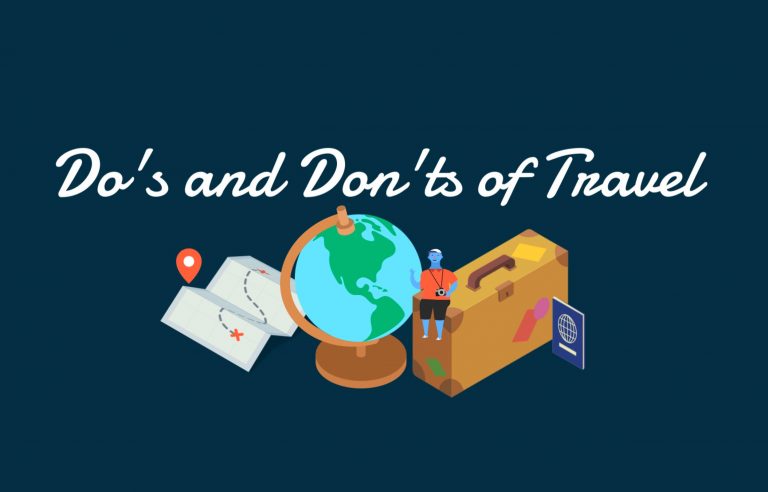Zombie Bunny is Reader-supported and may earn an affiliate commission through links on our site.

Boost Your Bottom Line: 10 Proven Strategies for 2023
Boost your bottom line in 2023 with our top 10 proven strategies for enhanced income. #FinancialUplift #BottomLineBoost
Uncover the key to a robust bottom line in 2023 with our comprehensive guide on ten proven financial strategies. From embracing digital transformation to investing in your employees, our blog provides practical insights into how businesses can adapt to the rapidly evolving business landscape. Discover how companies like Apple, Amazon, and Netflix leverage these strategies to drive growth, profitability, and resilience. Whether it’s through enhancing operational efficiency, diversifying your customer base, fostering a culture of innovation, or providing exceptional customer experiences, these strategies will set your business on the path to financial success. Stay ahead of the curve as we delve into each strategy, providing actionable tips for your business success in 2023.
Introduction: The Bottom Line for 2023

© Copyright , ZombieBunny.Org
The importance of strong financial strategies
As we approach 2023, the significance of robust financial strategies in today’s business landscape cannot be overstated. These strategies form the backbone of any successful enterprise, driving growth, stability, and profitability. They are essential for navigating the ever-shifting economic terrain and for staying competitive in an increasingly digital and global market.
When executed effectively, strong financial strategies can help companies anticipate market trends, make informed decisions and optimize resources. They can transform financial data into actionable insights, enabling businesses to identify opportunities, mitigate risks and achieve their financial goals. This can result in improved operational efficiency, increased revenue, and ultimately, a bolstered bottom line.
In an era of unprecedented disruption and innovation, these strategies are more important than ever. They are key to staying resilient in the face of uncertainties and to seizing the opportunities that lie ahead. So, as we gear up for 2023, let’s delve into the ten proven strategies that can help boost your bottom line and set your business on the path to financial success.
An overview of the current business climate
The business climate as we move towards 2023 is one marked by rapid technological advancements, increased digitalization, and the ongoing effects of the global pandemic. These factors combined have precipitated a shift in business operations, customer behavior, and market dynamics. Consequently, businesses are required to adapt swiftly, rethink traditional methods, and embrace innovative approaches to stay afloat and thrive.
In this digital age, technology plays a critical role in shaping the business environment. With the rise of artificial intelligence, big data, and cloud computing, businesses are leveraging technology to streamline operations, enhance customer experiences, and gain a competitive edge. Moreover, the pandemic has accelerated the shift towards remote work, e-commerce, and digital services, transforming the way businesses operate and interact with their customers.
This current climate, while challenging, presents unique opportunities for businesses. It calls for strategic thinking, agility, and resilience. By understanding these trends and adapting to these changes, businesses can not only navigate the complexities of the current climate but also seize opportunities for growth and expansion. As we venture into 2023, the focus should be on developing and implementing strong financial strategies that align with these trends to boost the bottom line. Stay tuned as we delve into these strategies and provide insights on how to leverage them for your business success.
Introduction to the 10 strategies to boost the bottom line
In the evolving business landscape of 2023, a well-defined set of financial strategies will be integral to boosting your bottom line. These strategies are not just about cost-cutting or revenue generation, but encompass a broader perspective of business operation and growth. They address aspects like digital transformation, sustainability, employee investment, data-driven decision making, customer diversification, continuous innovation, customer experience, partnerships, operation optimization, and branding.
Embracing digital transformation allows your business to leverage technology to streamline processes, enhance productivity, and drive growth. Incorporating sustainability into your business model can enhance your brand image, drive customer engagement and open up new market opportunities. Investing in your employees enhances their productivity and loyalty, leading to improved business performance.
Utilizing data-driven decision making can help you make informed and effective business decisions. Diversifying your customer base can spread business risks and increase market share. A culture of continuous innovation can keep your business ahead of the competition and drive long-term success.
Enhancing customer experience can drive customer loyalty and increase sales. Forming strategic partnerships can provide access to new markets, technologies, and resources. Optimizing operations can improve efficiency and effectiveness, leading to cost savings and improved profitability. Lastly, investing in marketing and branding can increase your business visibility, attract new customers and drive growth.
As we proceed, we will delve deeper into each of these strategies, providing practical tips and insights on how you can effectively implement them to boost your bottom line in 2023.
Strategy 1: Embrace Digital Transformation

© Copyright , ZombieBunny.Org
The role of digital transformation in business growth
Digital transformation has become a critical factor in business growth as we head into 2023. It refers to the integration of digital technology into all areas of a business, fundamentally changing how you operate and deliver value to customers. More than just a tech shift, it’s a cultural change that requires organizations to continually challenge the status quo, experiment, and get comfortable with failure.
The role of digital transformation in business growth is multifaceted. Firstly, it streamlines business processes, enabling companies to operate more efficiently and effectively. By automating routine tasks, businesses can save time and resources, allowing them to focus on strategic initiatives that drive growth.
Secondly, digital transformation enhances customer experiences. With digital technology, businesses can offer personalized experiences, engage with customers across multiple channels, and respond quickly to customer needs. This can lead to increased customer satisfaction, loyalty, and ultimately, higher sales.
Lastly, digital transformation allows businesses to leverage data for decision making. With advanced analytics, businesses can gain insights into customer behavior, market trends, and business performance. This enables them to make informed decisions, optimize strategies, and drive business growth.
Embracing digital transformation is no longer optional but a necessity for businesses seeking to boost their bottom line in 2023. It demands a strategic approach, clear objectives, and continuous improvement. In the following sections, we will explore how businesses can successfully embark on this digital journey.
Examples of successful digital transformation
Several businesses across various industries have successfully embraced digital transformation, reaping substantial benefits in the process. A prime example of this is Netflix. The company began as a DVD rental service but quickly recognized the potential of online streaming. By pivoting to a digital platform, Netflix has been able to capture a massive global audience, disrupt the entertainment industry, and become a leading player in the market.
Another noteworthy example is Domino’s Pizza. Once struggling, the company turned its fortunes around by embracing digital transformation. They implemented digital ordering through various platforms, including social media, smart devices, and even through texting a pizza emoji. The result? A significant boost in sales and a strong market position. Domino’s is now considered more of a tech company that sells pizza than a traditional fast-food chain.
Then there’s the case of General Electric (GE), a traditional manufacturing company that successfully transformed itself into a digital industrial leader. GE launched Predix, a software platform for industrial IoT, allowing it to leverage data to optimize its operations and offer new services.
These examples highlight how digital transformation can lead to increased efficiency, improved customer engagement, and new revenue streams. Each company had a clear vision, embraced innovation, and wasn’t afraid to disrupt their own business models for long-term success. These are key lessons for any business looking to boost their bottom line in 2023 through digital transformation.
How to implement digital transformation in your business
Implementing digital transformation in your business requires a strategic and structured approach. To start, it’s crucial to define your digital transformation objectives. What are you aiming to achieve? It could be improving customer experience, increasing operational efficiency, or creating new digital products or services. Having clear goals will guide your transformation journey.
Next, understand your current digital maturity. Evaluate your existing technology, processes, and digital skills. This assessment will help identify gaps and guide your transformation strategy. Remember, digital transformation isn’t just about technology; it’s also about people and processes.
Once you’ve defined your objectives and assessed your current state, create a roadmap. This should outline the steps needed to achieve your digital transformation goals. It might include investing in new technologies, reengineering processes, upskilling staff, or hiring digital talent. Your roadmap should be flexible to accommodate changes as you progress.
Implementation should be incremental. Instead of trying to transform everything at once, start with small projects that can deliver quick wins. This not only builds momentum but also helps learn and refine your approach as you go.
Finally, embed a digital culture within your organization. Encourage innovation, collaboration, and a customer-centric approach. This culture shift is critical to driving digital transformation.
Remember, digital transformation is a journey, not a destination. It requires ongoing efforts and commitment. By taking a strategic and systematic approach, you can navigate this journey successfully and boost your bottom line in 2023.
Strategy 2: Lean into Sustainability

© Copyright , ZombieBunny.Org
The increasing importance of sustainability in business
As we progress towards 2023, sustainability is rapidly becoming a business imperative. Businesses are increasingly recognizing that their long-term success is intertwined with the health of our planet and its communities. Sustainability, in this context, refers to a company’s activities that demonstrate a commitment to social and environmental responsibility, alongside economic profitability.
There are several reasons for the growing importance of sustainability in business. The first is consumer demand. Today’s consumers, especially millennials and Gen Z, prefer to buy from companies that align with their values. They are willing to pay a premium for products and services from companies that demonstrate a commitment to environmental and social responsibility.
Secondly, sustainability can lead to cost savings. Sustainable practices such as energy efficiency, waste reduction, and water conservation can significantly reduce operating costs. Moreover, they can help companies future-proof their operations by mitigating risks related to resource scarcity.
Thirdly, sustainability can drive innovation. It pushes companies to rethink their products, services, and processes to minimize their environmental impact. This can lead to the development of new, innovative solutions that can provide a competitive edge.
Finally, sustainability can enhance a company’s brand image and reputation. Companies that are seen as responsible and sustainable are more likely to attract and retain customers, employees, and investors.
As we venture into 2023, businesses that embrace sustainability will not only contribute to global sustainability goals but also boost their bottom line.
Examples of successful sustainable practices
Several companies have incorporated successful sustainable practices into their business models, reaping both environmental and economic benefits. One such example is Patagonia, the outdoor clothing company. Patagonia has integrated sustainability into its mission, investing in eco-friendly materials, encouraging customers to repair and recycle products, and even donating a portion of its profit to environmental causes. These practices have not only reduced their environmental impact but also strengthened their brand and customer loyalty.
Another example is Unilever, the multinational consumer goods company. Unilever has committed to making its products more environmentally friendly, reducing waste, and improving health and wellbeing. Through these efforts, Unilever has managed to save costs, spur innovation, and enhance its reputation.
IKEA, the Swedish furniture giant, has also adopted sustainable practices. The company aims to use only renewable or recycled materials in its products by 2030. It also invests in renewable energy and aims to become climate positive by 2030. These initiatives have helped IKEA to reduce its environmental footprint, cut costs, and appeal to eco-conscious consumers.
These examples demonstrate that sustainable practices can bring about tangible benefits. They can help businesses to save costs, drive innovation, enhance brand reputation, and meet the increasing demand for sustainable products and services. As we move towards 2023, companies that adopt sustainable practices will be better positioned to boost their bottom line and achieve long-term success.
How to incorporate sustainability into your business operations
Incorporating sustainability into your business operations is a strategic move that can boost your bottom line and contribute positively to the planet. The first step is to understand your environmental impact. Conduct a sustainability audit to identify areas where your business has the most significant environmental footprint. This could be energy usage, water consumption, waste generation, or carbon emissions.
Once you’ve identified these areas, set clear, measurable sustainability goals. These goals could involve reducing energy consumption, minimizing waste, sourcing sustainable materials, or reducing greenhouse gas emissions. Remember to align your sustainability goals with your overall business objectives.
Next, develop a sustainability plan. This should outline the actions you’ll take to achieve your sustainability goals. For example, you could invest in energy-efficient equipment, implement recycling programs, or switch to renewable energy sources. Incorporating sustainable practices into your everyday operations can lead to significant cost savings over time.
Engage your employees in your sustainability efforts. Provide training and education about sustainability and encourage them to contribute ideas. Employee involvement can lead to greater commitment and innovation.
Finally, communicate your sustainability efforts to your stakeholders. This includes your employees, customers, investors, and the broader community. Transparency about your sustainability efforts can enhance your brand reputation, build trust with stakeholders, and attract socially-conscious customers and investors.
Incorporating sustainability into your business operations is an ongoing process that requires commitment, innovation, and continuous improvement. As you progress towards 2023, it is an investment that can yield significant returns for your bottom line and the planet.
Strategy 3: Invest in Your People

© Copyright , ZombieBunny.Org
The value of investing in employee development
Investing in employee development is one of the most effective strategies to boost your bottom line in 2023. This investment entails providing opportunities for continuous learning and growth, such as training programs, workshops, and professional development courses. The value of this investment is manifold, contributing to both employee satisfaction and business performance.
Firstly, investing in employee development increases job satisfaction and engagement. When employees feel their employer is invested in their growth, they are more likely to feel valued and committed to the organization. Increased engagement leads to higher productivity levels, which directly impacts the bottom line.
Secondly, employee development fosters a culture of continuous learning and improvement. This culture boosts innovation, as employees who are encouraged to learn and grow are more likely to bring fresh ideas and perspectives to the table. Innovation is a key driver of business growth and competitiveness.
Thirdly, investing in employee development enhances your company’s ability to attract and retain top talent. In today’s competitive job market, offering opportunities for professional development is a significant draw for job seekers. Retaining top talent reduces turnover costs and ensures your business has the skills it needs to succeed.
Finally, employee development helps prepare your business for the future. By investing in the development of your workforce, you ensure your business has the skills and competencies needed to navigate future challenges and seize new opportunities. As we forge into 2023, investing in your people will be key to boosting your bottom line.
Examples of successful employee investment strategies
There are numerous examples of companies that have reaped the benefits of investing in their employees. Google is a prime example. Known for its employee-friendly environment, Google offers numerous learning and development opportunities, including coding classes, leadership training, and even mindfulness courses. This has helped Google foster a culture of continuous learning, drive innovation, and consistently rank as one of the best places to work.
Another example is Salesforce, a software company that prioritizes employee development. Salesforce provides its employees with a $1,000 annual stipend for professional development, which can be used for courses, conferences, or certifications. This investment has helped Salesforce build a skilled workforce and maintain a competitive edge in the rapidly evolving tech industry.
Starbucks also stands out for its investment in employee development. The coffee giant offers a College Achievement Plan for its U.S. employees, providing full tuition coverage for a bachelor’s degree through Arizona State University’s online program. This has not only helped Starbucks attract and retain talented employees but also contributed to a positive company culture.
These examples demonstrate the tangible benefits of investing in employee development. By prioritizing employee learning and growth, these companies have enhanced their competitiveness, boosted employee engagement and satisfaction, and ultimately, improved their bottom line. As we move towards 2023, these successful strategies provide valuable insights for businesses looking to invest in their people.
How to implement employee investment in your organization
Investing in your employees is a strategic move that can significantly boost your bottom line. The first step in implementing an employee investment strategy is to understand your employees’ needs and aspirations. Conduct surveys or hold one-on-one meetings to gain insights into what kind of development opportunities your employees are interested in.
Once you have a clear understanding of their needs, develop a comprehensive employee development program. This could include skills training, leadership development, mentoring, or coaching. Ensure the program aligns with your business goals and that it offers opportunities for growth and advancement.
Next, allocate time and resources for development activities. This could mean providing time off for training, investing in learning materials, bringing in external trainers, or even subsidizing further education. Consider different learning styles and provide various learning options, such as online courses, workshops, or job rotation.
Promote a culture of continuous learning. Encourage employees to take ownership of their development, set learning goals, and seek feedback. Recognize and reward learning achievements to motivate and engage employees.
Finally, regularly evaluate the effectiveness of your employee investment strategy. Gather feedback, track progress, and measure results. This will help you refine your strategy, ensure it remains relevant, and maximizes returns on your investment.
Implementing an employee investment strategy is a long-term commitment that requires ongoing effort and resources. However, the benefits – from improved productivity and innovation to increased employee satisfaction and retention – make it a worthwhile investment for boosting your bottom line in 2023.
Strategy 4: Utilize Data-Driven Decision Making

© Copyright , ZombieBunny.Org
The impact of data-driven decision making on business performance
In today’s digital age, data-driven decision making is a critical factor in enhancing business performance and boosting the bottom line. Data-driven decision making involves collecting and analyzing data to guide strategic business decisions. It replaces gut feeling and intuition with empirical evidence, leading to more informed and effective decisions.
The impact of data-driven decision making on business performance is multifaceted. First and foremost, it improves efficiency. With data, businesses can identify operational inefficiencies, streamline processes, and optimize resource allocation. This can lead to significant cost savings and improved productivity.
Secondly, data-driven decision making enhances customer understanding. By analyzing customer data, businesses can gain insights into customer behavior, preferences, and needs. This can inform marketing strategies, drive customer engagement, and ultimately, boost sales.
Thirdly, data can inform strategic decision making. It can provide insights into market trends, competitor performance, and industry benchmarks. This can help businesses identify opportunities, mitigate risks, and make strategic decisions that drive business growth.
Finally, data can drive innovation. By identifying patterns and trends, data can spark new ideas and inform the development of new products, services, or business models.
As we head into 2023, the ability to harness data for decision making will be a key determinant of business success. Businesses that can effectively collect, analyze, and act on data will be well-positioned to boost their bottom line and achieve sustainable growth.
Examples of successful data-driven companies
Numerous companies have successfully leveraged data-driven decision making to enhance their business performance. Amazon is a prime example. By analyzing customer data, Amazon provides personalized recommendations, optimizes its supply chain, and even anticipates customer needs before they arise. This data-driven approach has been critical to Amazon’s success, driving customer engagement and boosting sales.
Netflix is another example of a successful data-driven company. Netflix uses data to inform its content strategy, analyzing viewer behavior to determine what shows to produce, how many episodes to create, and even what time to release new content. This data-driven approach has helped Netflix to engage viewers, reduce churn, and maintain its position as a leader in the streaming industry.
Uber, the ride-hailing giant, also leverages data to drive its business. Uber uses data to predict demand, optimize pricing, and improve its service. This has helped Uber to efficiently allocate resources, enhance customer satisfaction, and drive growth.
These examples demonstrate the power of data-driven decision making. By leveraging data, these companies have been able to make more informed decisions, optimize their operations, and deliver superior customer experiences. As we move towards 2023, businesses that adopt a data-driven approach will be well-positioned to boost their bottom line and achieve sustainable growth.
How to adopt data-driven decision making in your business
Adopting data-driven decision making in your business is a strategic move that can have a significant impact on your bottom line. The first step is to ensure you have the right data. Identify what data is relevant to your business decisions, and ensure you have the systems and processes in place to collect this data accurately and consistently.
Once you have the right data, invest in data analysis tools. These tools can help you analyze your data, identify patterns and trends, and derive actionable insights. Keep in mind that the tools you choose should align with your business needs and capabilities.
Next, build data literacy within your organization. Ensure your team has the skills to understand and interpret data. This may involve providing training or hiring data specialists. Having a data-literate team will ensure you can effectively use your data to inform decision making.
Implement a data-driven culture. Encourage your team to use data in their decision-making processes. This might involve setting expectations, leading by example, and recognizing and rewarding data-driven decisions.
Finally, continually monitor and evaluate your data-driven decisions. This will help you understand the impact of your decisions, learn from your successes and failures, and refine your approach over time.
Adopting data-driven decision making is an ongoing process that requires commitment, resources, and a willingness to learn and adapt. However, the benefits – from improved efficiency and effectiveness to enhanced decision-making capabilities – make it a worthwhile investment for boosting your bottom line in 2023.
Strategy 5: Diversify Your Customer Base

© Copyright , ZombieBunny.Org
The benefits of having a diverse customer base
Diversifying your customer base is a strategic move that can significantly boost your bottom line. Having a diverse customer base means serving a wide range of customers from different demographics, geographies, and industries. This diversity offers several benefits that can enhance your business performance.
Firstly, a diverse customer base can reduce business risk. If your business relies on a single demographic or market, you could be vulnerable to shifts in that particular segment. However, if your customers are diverse, a downturn in one segment or geography can be offset by the stability or growth in another.
Secondly, a diverse customer base can lead to increased revenue. By reaching out to different customer segments, you can tap into new markets, attract more customers, and increase your sales.
Thirdly, a diverse customer base can drive innovation. Serving a wide range of customers can expose you to different needs, preferences, and perspectives. This can spark new ideas, inspire innovation, and lead to the development of new products or services.
Finally, a diverse customer base can enhance your company’s reputation. Showcasing your ability to serve a wide range of customers can enhance your credibility, attract more customers, and build trust in your brand.
As we move towards 2023, businesses that prioritize customer diversification will be better positioned to mitigate risks, seize opportunities, and boost their bottom line.
Examples of businesses with diverse customer bases
Numerous businesses have successfully diversified their customer base, reaping significant benefits in the process. McDonald’s is a prime example. With a presence in over 100 countries, the fast-food giant serves a diverse range of customers across different demographics and geographies. This diversity has not only fueled McDonald’s global expansion but also enabled it to withstand market fluctuations and shifts in consumer behavior.
Another example is Amazon. The e-commerce giant serves a wide range of customers, from individual consumers to businesses across different industries. This diverse customer base has contributed to Amazon’s massive growth, providing it with multiple streams of revenue and reducing its dependence on any single market segment.
IBM is another company that has successfully diversified its customer base. Once primarily a hardware company, IBM has transitioned into areas like cloud computing, artificial intelligence, and consulting services. By diversifying its offerings, IBM has managed to attract a diverse range of customers across different industries and regions.
These examples demonstrate the advantages of having a diverse customer base. By serving a wide range of customers, these businesses have been able to expand their reach, increase their resilience, and drive growth. As we head into 2023, businesses that prioritize customer diversification will be well-positioned to boost their bottom line and achieve sustainable growth.
How to diversify your customer base
Diversifying your customer base is a strategic move that can significantly enhance your business performance. The first step towards diversification is understanding your current customer base. Analyze your customers’ demographics, preferences, and buying behaviors to identify gaps and opportunities for diversification.
Next, identify new customer segments that align with your business offerings. This could involve targeting different age groups, income levels, geographies, or industries. Conduct market research to understand the needs, preferences, and behaviors of these new segments.
Develop and tailor your products or services to meet the needs of the new customer segments. This could mean introducing new features, adjusting pricing, or offering customized solutions. Ensure your offerings provide value to these customers and meet their unique needs.
Adapt your marketing strategy to reach these new customer segments. This could involve using different marketing channels, adjusting your messaging, or employing different marketing tactics. Ensure your marketing efforts resonate with these customers and effectively communicate the value of your offerings.
Finally, deliver excellent customer service to retain these new customers. Provide support, respond to queries promptly, and seek feedback to improve your services.
Diversifying your customer base requires a strategic approach, market understanding, and a customer-centric mindset. However, the benefits – from increased resilience and revenue to enhanced innovation and reputation – make it a worthwhile strategy for boosting your bottom line in 2023.
Strategy 6: Innovate Continuously

© Copyright , ZombieBunny.Org
The importance of continuous innovation in business
Innovation is a vital ingredient for business success in today’s fast-paced, ever-changing business environment. Continuous innovation refers to the ongoing process of discovering, creating, and implementing new ideas, products, or methods that create value. This is not a one-time effort but a continuous cycle that drives business growth and competitiveness.
The importance of continuous innovation in business is multifaceted. Firstly, it leads to the development of new products or services, enabling businesses to meet changing customer needs, tap into new markets, and increase revenue streams.
Secondly, continuous innovation enhances operational efficiency. Innovative processes or technologies can streamline operations, reduce costs, and increase productivity. This can lead to significant cost savings and improved profitability.
Thirdly, continuous innovation builds a competitive advantage. In today’s highly competitive business landscape, businesses that continuously innovate distinguish themselves, stay ahead of competitors, and secure a dominant market position.
Fourthly, continuous innovation fosters a culture of creativity and learning. This not only attracts and retains top talent but also drives employee engagement and productivity.
Finally, continuous innovation future-proofs your business. By constantly adapting and evolving, businesses can better navigate changes, seize emerging opportunities, and mitigate potential risks.
As we move towards 2023, businesses that embrace continuous innovation will be better positioned to adapt to change, drive growth, and boost their bottom line.
Examples of innovative companies
Numerous companies have successfully embraced continuous innovation, reaping substantial benefits in the process. Apple is a prime example. From the iPod to the iPhone to the iPad, Apple’s continuous innovation in product design and user experience has established it as a leader in the tech industry and fueled its global success.
SpaceX, Elon Musk’s aerospace company, is another example of a highly innovative company. Through its continuous innovation in rocket technology, SpaceX has not only reduced the cost of space travel but also made the once unthinkable goal of colonizing Mars a real possibility.
Google is another example of continuous innovation. From its search engine to Gmail, Google Maps, and Google Assistant, Google’s continuous innovation has not only driven its growth but also transformed the way we live and work.
Amazon, too, exemplifies continuous innovation. From online retail and Kindle to cloud computing and Alexa, Amazon’s culture of innovation has enabled it to diversify its business, penetrate new markets, and maintain its competitive edge.
These examples illustrate the power of continuous innovation. By constantly creating and implementing new ideas, these companies have been able to stay ahead of the competition, adapt to changing market dynamics, and drive significant growth. As we move towards 2023, these examples offer valuable lessons for businesses looking to innovate continuously and boost their bottom line.
How to foster a culture of innovation in your business
Fostering a culture of innovation is crucial for businesses looking to stay competitive and boost their bottom line. The first step towards building an innovative culture is to encourage creativity. Provide a safe space for your team to share ideas, challenge the status quo, and experiment. This can stimulate creativity and lead to the development of innovative solutions.
Next, invest in learning and development. Continuous learning fuels innovation by equipping your team with new skills and knowledge. Provide training, workshops, or resources that can help your team stay updated with the latest trends and technologies.
Thirdly, provide the necessary resources and tools for innovation. This could be time, funding, or technology. Ensuring your team has the necessary resources can empower them to innovate and implement their ideas.
Fourthly, recognize and reward innovation. Celebrate innovative ideas and solutions, regardless of whether they succeed or fail. This can motivate your team to innovate and take risks.
Finally, lead by example. As a leader, your attitude towards innovation can have a significant impact on your team. Show your commitment to innovation through your actions and decisions.
Fostering a culture of innovation is an ongoing process that requires commitment, resources, and a conducive environment. However, the benefits – from increased competitiveness and growth to enhanced employee engagement and satisfaction – make it a worthwhile investment for boosting your bottom line in 2023.
Strategy 7: Enhance Customer Experience

© Copyright , ZombieBunny.Org
The value of a positive customer experience
In today’s competitive business landscape, providing a positive customer experience is more important than ever. Customer experience refers to the perceptions and feelings customers have about their interactions with your business. The value of a positive customer experience is manifold and can significantly boost your bottom line.
Firstly, a positive customer experience can enhance customer satisfaction. When customers have positive experiences, they are more likely to be satisfied with your products or services. Satisfied customers are more likely to make repeat purchases, increasing your revenue.
Secondly, a positive customer experience can build customer loyalty. Customers who have positive experiences are more likely to stay loyal to your business. Customer loyalty not only leads to repeat business but also reduces the cost of acquiring new customers.
Thirdly, a positive customer experience can enhance your brand reputation. Happy customers are more likely to recommend your business to others, providing valuable word-of-mouth marketing. A strong brand reputation can attract new customers and drive business growth.
Lastly, a positive customer experience can give you a competitive advantage. In industries where products and prices are similar, customer experience can be a key differentiator.
As we move towards 2023, businesses that prioritize customer experience will be well-positioned to enhance customer satisfaction, build loyalty, improve their reputation, and ultimately, boost their bottom line.
Examples of companies with exceptional customer experiences
Several companies have set the bar high when it comes to providing exceptional customer experiences. One such example is Apple. Known for its sleek and intuitive products, Apple also excels in providing excellent customer service. From personalized in-store service at the Genius Bar to swift online support, Apple’s commitment to customer experience has contributed to its strong brand loyalty and impressive sales.
Another company renowned for its customer experience is Zappos. The online retailer’s primary focus is not on shoes but on delivering the best customer service possible. They offer free shipping, a 365-day return policy, and a 24/7 customer service line, all of which contribute to a hassle-free shopping experience that customers appreciate.
Disney is another brand synonymous with exceptional customer experience. From their theme parks to their movies, Disney consistently creates magical experiences for their customers. Their attention to detail, commitment to storytelling, and world-class customer service all contribute to a memorable customer experience.
These companies understand that providing an exceptional customer experience is more than just a nice-to-have; it’s a strategic imperative. By prioritizing customer experience, these companies have been able to enhance customer satisfaction, build loyalty, and boost their bottom line. As we move towards 2023, these examples offer valuable lessons for businesses looking to enhance their own customer experiences.
How to enhance customer experience in your business
Enhancing customer experience in your business can significantly boost your bottom line. The first step towards improving customer experience is understanding your customers. Conduct surveys, collect feedback, and analyze customer data to gain insights into your customers’ needs, preferences, and pain points.
Once you understand your customers, you can tailor your products, services, and interactions to meet their needs. This could involve personalizing your offerings, improving your user interface, or simplifying your purchasing process.
Next, invest in customer service. Ensure your team is trained to provide excellent service, respond to queries promptly, and resolve issues effectively. Remember, your customer service representatives are often the face of your business, and their interactions can significantly impact your customers’ experiences.
Consider the entire customer journey, not just individual touchpoints. Each interaction, from the first point of contact to post-purchase support, contributes to the overall customer experience. Ensuring a seamless and enjoyable journey can enhance customer satisfaction and loyalty.
Finally, continually monitor and improve your customer experience. Collect feedback, track key metrics, and be open to change. This will help you to continually refine your customer experience, stay in tune with changing customer needs, and stay ahead of the competition.
Enhancing customer experience requires a customer-centric mindset, strategic approach, and ongoing effort. However, the benefits – from increased customer satisfaction and loyalty to improved brand reputation and sales – make it a worthwhile investment for boosting your bottom line in 2023.
Strategy 8: Capitalize on Partnerships

© Copyright , ZombieBunny.Org
The benefits of business partnerships
Forming business partnerships is a strategic move that can significantly boost your bottom line. A business partnership involves collaborating with another business that can complement your offerings, share resources, or enhance your market reach. The benefits of business partnerships are numerous and can enhance your business performance.
Firstly, partnerships can lead to cost savings. By sharing resources, knowledge, or technologies, partners can reduce costs and increase efficiency. This can lead to significant savings and improved profitability.
Secondly, partnerships can expand your market reach. By partnering with a business that has a different customer base, you can reach new customers, tap into new markets, and increase your sales.
Thirdly, partnerships can enhance your offerings. By combining different products, services, or skills, partners can create more comprehensive and attractive offerings. This can enhance your competitiveness and appeal to customers.
Fourthly, partnerships can spur innovation. By collaborating and sharing ideas, partners can spark creativity, drive innovation, and develop new solutions.
Finally, partnerships can build your credibility. A partnership with a reputable business can enhance your reputation, attract more customers, and build trust in your brand.
As we move towards 2023, businesses that capitalize on partnerships will be better positioned to reduce costs, expand their reach, enhance their offerings, innovate, and build credibility, ultimately boosting their bottom line.
Examples of successful business partnerships
Numerous businesses have capitalized on partnerships to boost their bottom line. One of the most iconic examples is the partnership between Apple and IBM. Despite being competitors in the past, Apple and IBM partnered in 2014 to develop business apps for iPhones and iPads. This partnership allowed Apple to penetrate the enterprise market, while IBM could leverage Apple’s consumer market appeal.
Another successful partnership is between Spotify and Uber. In 2014, they partnered to allow Uber riders to play their Spotify music during their rides. This enhanced the customer experience for both businesses and brought new users to both platforms.
A third example is the partnership between Nike and Apple. These two companies collaborated to create the Nike+ Running App that could be used with Apple devices. This partnership allowed Nike to tap into Apple’s vast customer base and technological expertise, while Apple could offer an additional feature to its customers.
These examples showcase the power of business partnerships. By combining resources, market reach, and expertise, these businesses were able to enhance their offerings, reach new customers, and drive growth. As we move towards 2023, these examples offer valuable lessons for businesses looking to capitalize on partnerships to boost their bottom line.
How to identify and establish beneficial partnerships
Identifying and establishing beneficial partnerships can significantly boost your bottom line. The first step is to identify potential partners that align with your business goals. Look for businesses that have complementary offerings, share your target market, or possess resources or expertise that you lack. Conduct market research, tap into your networks, or attend industry events to find potential partners.
Once you’ve identified potential partners, evaluate their suitability. Consider their reputation, financial stability, and cultural fit. Also, assess the potential benefits and risks of the partnership. This will help you select a partner that aligns with your business and can deliver mutual benefits.
Next, approach the potential partner and propose the partnership. Clearly communicate the benefits of the partnership and how it can create value for both parties. Be open and transparent about your expectations, terms, and conditions.
Once you’ve agreed to form a partnership, establish clear roles and responsibilities. Define what each party will contribute to the partnership and how the benefits will be shared. This clarity can prevent misunderstandings and ensure a smooth partnership.
Finally, maintain open and regular communication with your partner. This can foster trust, resolve issues, and facilitate effective collaboration.
Establishing beneficial partnerships requires strategic thinking, careful selection, and effective management. However, the benefits – from cost savings and market expansion to enhanced offerings and innovation – make it a worthwhile strategy for boosting your bottom line in 2023.
Strategy 9: Optimize Operations

© Copyright , ZombieBunny.Org
The impact of operational efficiency on the bottom line
Operational efficiency refers to the ability of a business to deliver products or services in the most cost-effective manner without sacrificing quality. Improving operational efficiency can have a significant impact on your bottom line.
Firstly, operational efficiency can lead to cost savings. By streamlining processes, reducing waste, and optimizing resource use, businesses can reduce their operational costs. These savings can directly increase profitability and free up resources that can be reinvested into the business.
Secondly, operational efficiency can enhance productivity. Efficient operations can increase the output of products or services, enabling businesses to serve more customers and increase sales. This can lead to higher revenue and growth.
Thirdly, operational efficiency can improve customer satisfaction. Efficient operations can lead to faster delivery times, better product quality, or improved service. This can enhance customer satisfaction and loyalty, leading to repeat business and positive word-of-mouth.
Finally, operational efficiency can give a business a competitive advantage. Businesses that operate efficiently can often offer lower prices, better quality, or faster delivery than their competitors. This can enhance a business’s competitive position and drive market share.
As we move towards 2023, businesses that focus on optimizing their operations will be well-positioned to reduce costs, boost productivity, improve customer satisfaction, and gain a competitive advantage, all of which can significantly boost the bottom line.
Examples of businesses with optimized operations
Several businesses have successfully optimized their operations, reaping substantial benefits in the process. Toyota is a prime example. The automobile giant implemented the Toyota Production System, a lean manufacturing approach that focuses on reducing waste and improving efficiency. This approach has not only reduced costs but also improved product quality and delivery times.
Another company that excels in operational efficiency is Amazon. The e-commerce giant has optimized its operations through innovative technologies and processes. From automated warehouses to advanced logistics systems, Amazon’s operational efficiency has enabled it to offer fast delivery times, lower prices, and a vast product range.
McDonald’s is another example of a business with optimized operations. The fast-food chain has perfected its operational efficiency through standardized procedures, training programs, and technology. This has enabled McDonald’s to serve customers quickly, maintain consistent product quality, and keep costs low.
These examples illustrate the power of operational efficiency. By optimizing their operations, these businesses have been able to reduce costs, boost productivity, improve customer satisfaction, and gain a competitive edge. As we move towards 2023, these examples offer valuable lessons for businesses looking to optimize their operations and boost their bottom line.
How to optimize operations in your business
Optimizing operations in your business can significantly boost your bottom line. The first step towards operational optimization is to assess your current operations. Analyze your processes, resources, and technologies to identify inefficiencies or bottlenecks. This assessment will provide a baseline against which you can measure improvement.
Next, implement process improvements. This could involve streamlining workflows, eliminating unnecessary steps, or automating repetitive tasks. Lean methodologies or Six Sigma can provide useful frameworks for process improvement.
Invest in technology that can enhance operational efficiency. This could be software that automates administrative tasks, machinery that speeds up production, or analytics tools that provide insights for decision making.
Train your team in efficient practices. Ensure your staff understand the importance of efficiency and are equipped with the skills and knowledge to work efficiently. This can boost productivity and morale.
Finally, monitor and continually improve your operations. Use key performance indicators to measure your operational efficiency and identify areas for improvement. Be open to change and willing to adapt your operations as necessary.
Optimizing operations requires strategic thinking, investment in technology, staff training, and a commitment to continuous improvement. However, the benefits – from cost savings and increased productivity to improved customer satisfaction and competitive advantage – make it a worthwhile strategy for boosting your bottom line in 2023.
Strategy 10: Invest in Marketing and Branding

© Copyright , ZombieBunny.Org
The role of marketing and branding in boosting the bottom line
Marketing and branding play a crucial role in boosting a business’s bottom line. Marketing involves promoting your products or services to potential customers, while branding involves creating a unique identity that distinguishes your business from competitors.
Effective marketing can drive sales and growth. By reaching out to potential customers, communicating the value of your offerings, and persuading them to make a purchase, marketing can directly increase your revenue. Furthermore, marketing can help you tap into new markets, target specific customer segments, and maximize customer lifetime value.
Branding, on the other hand, can enhance customer loyalty and command premium pricing. A strong brand can evoke positive emotions, build trust, and create a sense of loyalty among customers. Loyal customers are more likely to make repeat purchases, recommend your business to others, and be less sensitive to price changes. This can lead to higher sales, increased customer retention, and improved profitability.
Moreover, a strong brand can give you a competitive advantage. In markets where products or services are similar, a strong brand can be a key differentiator that sways customer choice in your favor.
As we move towards 2023, businesses that invest in marketing and branding will be well-positioned to attract and retain customers, differentiate themselves from competitors, and ultimately, boost their bottom line.
Examples of successful marketing and branding strategies
Several companies have utilized marketing and branding strategies to boost their bottom line. Coca-Cola is a prime example. With its consistent messaging around happiness and togetherness, Coca-Cola has built a powerful brand that is recognized worldwide. Their marketing campaigns, from the classic “Share a Coke” to their holiday-themed adverts, have successfully resonated with consumers and driven sales.
Apple is another example of successful marketing and branding. Their minimalist branding and emphasis on innovation and design have created a premium brand image. Their product launch events and campaigns generate buzz and anticipation, driving demand and sales.
Nike’s “Just Do It” campaign is another example of successful marketing and branding. The slogan and accompanying campaigns have not only promoted their products but also built a brand associated with empowerment, performance, and perseverance.
Airbnb’s “Belong Anywhere” campaign effectively communicated their brand promise of unique travel experiences and a sense of belonging. This branding and marketing strategy resonated with travelers and hosts alike, driving growth for the platform.
These examples illustrate the power of marketing and branding in driving sales, building customer loyalty, and differentiating from competitors. As we move towards 2023, these examples offer valuable insights for businesses looking to invest in marketing and branding to boost their bottom line.
How to invest in marketing and branding for your business
Investing in marketing and branding can significantly boost your bottom line. The first step is to develop a clear and compelling brand identity. This should reflect your business’s values, mission, and unique selling proposition. Your brand identity will serve as the foundation for all your marketing efforts and customer interactions.
Once you have a strong brand identity, develop a marketing strategy. This should outline your target audience, key messages, marketing channels, and goals. Your strategy should align with your brand identity and business objectives.
Next, create engaging marketing content. This could be social media posts, blog articles, videos, or email newsletters. Your content should communicate your brand message, engage your target audience, and inspire action.
Invest in marketing channels that reach your target audience. This could be social media, search engine advertising, email marketing, or traditional advertising. Monitor and optimize your marketing efforts to maximize your return on investment.
Finally, measure the impact of your marketing and branding efforts. Track metrics like brand awareness, customer engagement, sales, and customer loyalty. Use these insights to refine your marketing and branding strategies.
Investing in marketing and branding requires strategic thinking, creativity, and ongoing effort. However, the benefits – from increased sales and customer loyalty to enhanced brand reputation and competitive advantage – make it a worthwhile investment for boosting your bottom line in 2023.
Conclusion: Implementing Strategies for a Successful 2023

© Copyright , ZombieBunny.Org
Recap of the 10 strategies and their importance
As we move towards 2023, businesses need to implement strategic initiatives to boost their bottom line. These ten strategies provide a roadmap for achieving success.
Continuous innovation, as exemplified by companies like Apple and SpaceX, is a key driver of competitiveness and growth. Fostering a culture of innovation can lead to the development of cutting-edge products and services that meet changing customer needs and market dynamics.
Enhancing customer experience, a strategy successfully employed by companies like Apple and Zappos, can increase customer satisfaction, loyalty, and word-of-mouth referrals. Focusing on customer experience can differentiate your business in a crowded marketplace and drive revenue growth.
Capitalizing on partnerships, as demonstrated by successful collaborations between Apple and IBM or Spotify and Uber, can lead to cost savings, market expansion, and enhanced offerings. Strategic partnerships can provide access to new resources, markets, and capabilities.
Optimizing operations, a strategy adopted by companies like Toyota and Amazon, can reduce costs, enhance productivity, and improve customer satisfaction. Operational efficiency can provide a competitive edge and drive profitability.
Investing in marketing and branding, a strategy embraced by companies like Coca-Cola and Nike, can increase brand awareness, customer loyalty, and sales. A strong brand and effective marketing can set your business apart and drive growth.
Implementing these strategies requires strategic thinking, commitment, and effort. However, the potential benefits – from increased sales and profitability to enhanced competitiveness and business growth – make these strategies worthwhile investments for a successful 2023.
Tips for implementing these strategies in the coming year
Implementing these strategies in the coming year requires careful planning and execution. Here are some tips to help you successfully implement these strategies.
Firstly, set clear goals. Define what you want to achieve with each strategy and set measurable objectives. This will provide direction and enable you to track your progress.
Secondly, develop a detailed plan. Outline the steps you need to take, the resources you require, and the timeline for each strategy. A well-defined plan can guide your actions and keep you on track.
Thirdly, allocate sufficient resources. Whether it’s time, money, or personnel, ensure you have the necessary resources to implement each strategy. Lack of resources can hinder your progress and undermine your efforts.
Fourthly, involve your team. Your team plays a crucial role in implementing these strategies. Communicate your goals and plans, involve them in decision-making, and provide the necessary training and support.
Finally, monitor and adjust your strategies. Track your progress against your objectives, collect feedback, and be ready to adjust your strategies as needed. This will help you stay responsive to changing circumstances and maximize your success.
Implementing these strategies may pose challenges, but the potential benefits make it a worthwhile endeavor. With clear goals, a detailed plan, sufficient resources, team involvement, and ongoing monitoring, you can successfully implement these strategies and boost your bottom line in 2023.
The potential impact on the bottom line when these strategies are applied
Applying these strategies can have a significant impact on your bottom line. Innovating continuously can enable you to develop new and improved offerings that meet customer needs and drive sales. Enhancing customer experience can increase customer satisfaction and loyalty, leading to repeat business and positive referrals.
Capitalizing on partnerships can provide access to new markets, reduce costs, and enhance your offerings, driving revenue growth. Optimizing operations can lead to cost savings and productivity gains, improving your profitability.
Investing in marketing and branding can increase your brand visibility, attract new customers, and enhance customer loyalty, leading to higher sales.
Together, these strategies can not only boost your revenue and profitability but also enhance your market position, brand reputation, and long-term business growth.
As we look ahead to 2023, businesses that embrace these strategies will be well-positioned to navigate the competitive landscape, meet changing customer needs, and ultimately, boost their bottom line. Implementing these strategies requires strategic planning, commitment, and effort. However, the potential benefits make these strategies a worthwhile investment for any business looking to boost their bottom line in the coming year.
Please support our site and purchase something from our store.







